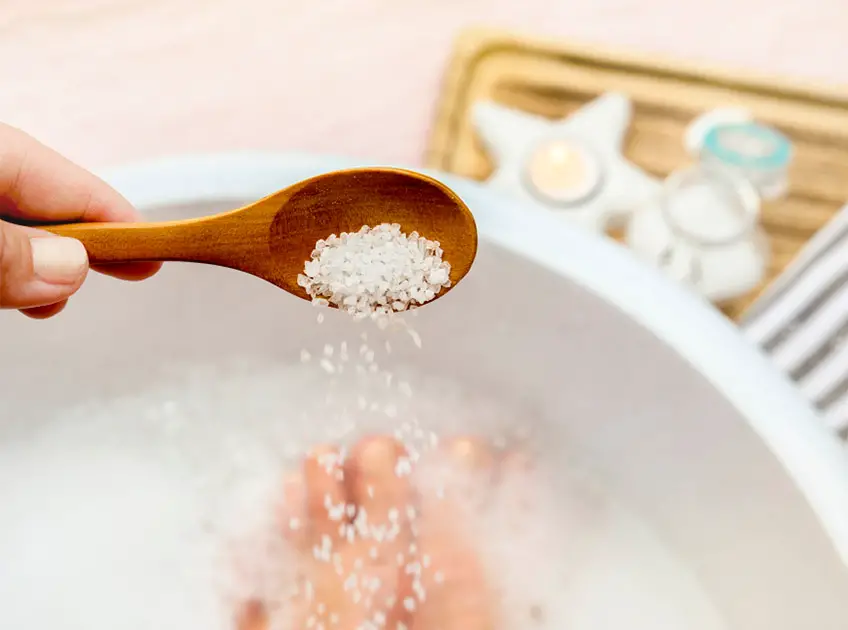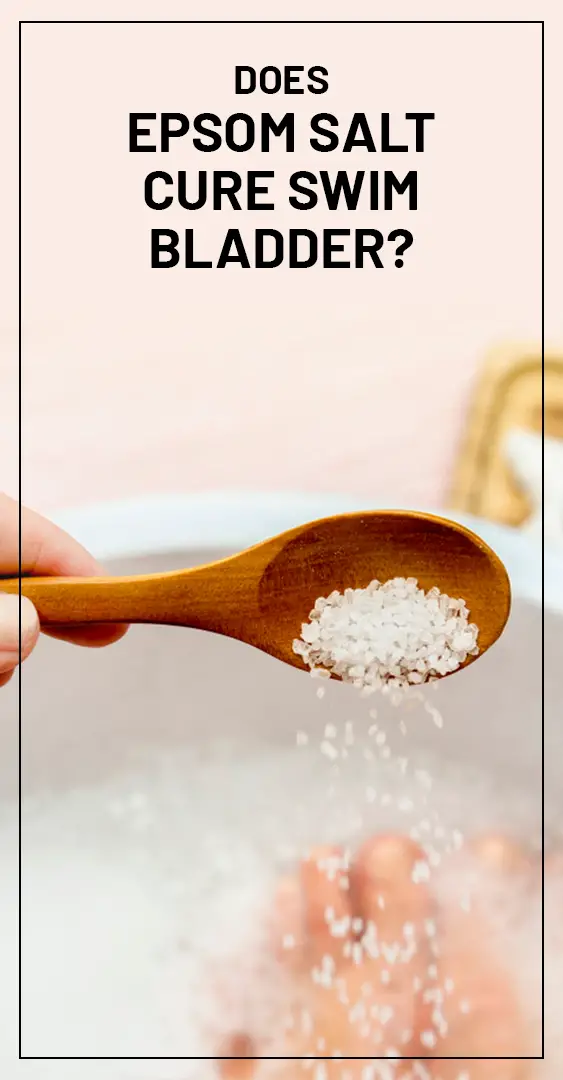
Important: This article is for informational purposes only. Please read our full disclaimer for more details.
Epsom salt is a compound that consists of magnesium, sulphur and oxygen. Even though it’s a salt, there is no sodium in it and it shouldn’t be confused with the common salt. It got its name from the town in England, Epsom where it was first discovered.
Epsom salt has properties that help to treat inflammation, swelling and certain diseases in fish. Even though the benefits of Epsom salt are anecdotal and there is no scientific evidence so far, the results are evident.
How Epsom Salt Helps Fish?
Epsom salt has laxative properties. It reduces swelling and helps to provide relief in many diseases that leads to inflammation. When used in the right dosage, Epsom salt has been seen helping in diseases like-
- Dropsy
- Popeyed
- Wound infection
- Swim bladder
Epsom salt helps a bloated fish expel air, feel well and swim and sink better. Apart from helping in treating different diseases in fish, this salt also regulates water hardness in saltwater tanks.
Let’s dig a little deeper and know how Epsom salt is beneficial for fish and aquariums.
Benefits Of Epsom Salt
1. Swim Bladder Disorder Treatment
When the fish is having trouble in swimming properly, it could be because of swim bladder disorder. In this disorder, the fish can be seen swimming upside down or stuck at the top or bottom of the tank.
The reason for swim bladder disorder is mostly pathogenic that Epsom salt cannot treat. However, if the swimming issue is due to overfeeding, Epsom salt bath can help correct buoyancy issues. Make sure you do not feed the fish for over 24 to 48 hours before giving them Epsom salt bath.
2. Constipation Treatment
Adding one tablespoon of Epsom salt per gallon of water helps to treat a constipated fish. Being a laxative, Epsom salt helps to relax the muscles of fish, enabling them to poop easily.
3. Dropsy Treatment
Epsom salt helps to draw fluids out of the fish’s body. There could be different reasons for dropsy, among which pathogenic could not be treated by Epsom salt. However, when this salt is combined with other medications, the chances of disease improvement increase.
Epsom salt reduces swelling in the abdominal area of the fish, helping it to return to its original streamlined shape faster. It helps fish to swim easily.
4. Regulate Water Hardness
Since Epsom salt consists of magnesium, the concentration of Mg+ ion in water increases, especially in saltwater aquariums when you add Epsom salt in it. By adding this salt, the water pH also alters. Therefore, if you want to regulate water hardness and increases the water pH, adding Epsom salt is a good option.
Do not forget to check the pH after regular intervals to maintain it within the specific range of fish’s requirements.
How To Use Epsom Salt In Aquarium To Treat Swim Bladder Disease?
To treat swim bladder diseases, you need to give Epsom salt bath to the fish. For this bath, you need to have the following materials-
- Epsom salt
- Quarantine tank to give fish Epsom salt bath
- Reviving tank
- Thermometer to check water’s temperature
- pH meter to maintain water’s pH
- Timer or stop watch to set time needed for treatment
- Measuring spoon for Epsom salt
- Net to transfer the fish safely
Steps For Epsom Salt Bath
- Take around one gallon of water from the fish tank and pour it into a quarantine tank. Make sure the temperature and other water parameters are same as of main tank so that fish does not come under stress.
- Add one tablespoon of Epsom salt into the quarantine tank and mix completely.
- With the help of net pick the fish in consideration and place in the Epsom salt bath. Let the fish stay in the quarantine tank for at least 5 to 10 minutes.
- By the time, prepare a reviving tank by adding a quarter of treated salt bath and ¾ of aquarium water.
- Now observe your fish and see how it is responding. If the fish is losing balance or its gills stop moving, it is passing out. Remove it immediately from the quarantine tank and transfer into the reviving tank.
- If the fish is responding well, let it stay there for 10 minutes and carefully remove it to return back to the main display tank. Observe the fish again in the main tank and ensure it is swimming well and there are no complications from the treatment.
Final words
Epsom salt is beneficial for swim bladder disease only when your fish is facing difficulty in swimming due to buoyancy. If there is some pathological reason behind swim bladder disease, Epsom salt alone will not be able to help.
When you expose your fish to Epsom salt bath, watch them closely and note how it responds. Generally, larger fish are more tolerant to Epsom salt bath than smaller fish. If you find the fish more stressed, use a lesser concentration of Epsom salt to help relieve symptoms of swim bladder disease.
You Might Also Like:
- How To Bleach Your Skin At Home – 6 Best Ways
- Which Is Better Bleached or Unbleached Flour?
- What Happens When You Drink Bleach?
- Cranberry Juice for Bladder Infections – How Effective Is it?
- 14 Simple Exercises to Reduce Belly Fat
- How to Use Turmeric for Arthritis Pain?
- Is Epsom Salt Bath Good For UTI
- How to Cure Insomnia Naturally?
- Why Do You Feel Pooping In The Stomach
- Get Rid Of That Black Eye With These 13 Effective Remedies
- 7 Best Water Softener Salts For Sensitive Skin

















